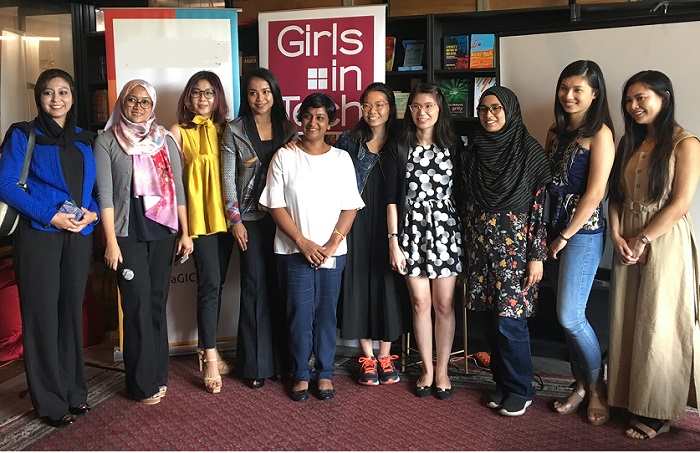- WEF reports 57% of women in tech experience gender discrimination
- Women require more exposure to STEM jobs and female role models

 As a woman leader in future tech in Malaysia, I am proud of the significant strides women have made in the technology industry. Science and technology have become crucial aspects of our daily lives, shaping our world in significant ways. Despite the industry being male-dominated, women are breaking through the glass ceiling and making valuable contributions to the field.
As a woman leader in future tech in Malaysia, I am proud of the significant strides women have made in the technology industry. Science and technology have become crucial aspects of our daily lives, shaping our world in significant ways. Despite the industry being male-dominated, women are breaking through the glass ceiling and making valuable contributions to the field.
On this International Women’s Day, I am inspired by the remarkable progress women have made in the tech industry, and believe it is an opportunity to reflect on the impact women have made in the technology industry and appreciate the progress they have made in overcoming obstacles and achieving success.
Women like Reshma Saujani, the founder of Girls Who Code, a non-profit organization that seeks to close the gender gap in technology by teaching girls how to code. To date, the organization has provided computer science education to over 300,000 girls and was named “Most Innovative Non-Profit” by Fast Company in 2019.
Similarly, Susan Wojcicki, who was the CEO of YouTube for nine years until she stepped down last month, has been a prominent figure in the tech industry for over two decades. As a strong advocate for women’s rights, Wojcicki has written about gender discrimination in the tech industry, such as her article “How to Break Up the Silicon Valley Boys’ Club.” She recognises that for the tech industry to truly be a force for good, it needs to address the gender gap issue and ensure equal opportunities for all.
As an inspiration and women icon in STEM, Özlem Türeci, co-founder and chief medical officer at BioNTech, applied her cancer treatment research using mRNA to create the first vaccine approved for use against Covid-19. After the success of the Covid-19 mRNA vaccine, she is continuing work on the mRNA technology to create a cancer vaccine, as well as a vaccine for malaria. She has filed over 500 international patent applications to date.
In Malaysia, women like Fakhirah Khairuddin (pic), is a much needed role model for young women. She was a trained engineer and technician in FANUC and KUKA Robotics and while pursuing a Bachelor’s and Master’s degree at UC San Diego, she participated in several aerospace and mechanical engineer ing endeavors. Presently, she is employed at Sila Nanotechnologies Inc, located in California, where she is dedicated to developing silicon anodes for batteries of the next generation to enhance the present lithium design.
ing endeavors. Presently, she is employed at Sila Nanotechnologies Inc, located in California, where she is dedicated to developing silicon anodes for batteries of the next generation to enhance the present lithium design.
On the tech founder side, Tan Hooi Ling (pic, right) is a prominent founder in Malaysia, who co-founded and currently serves as COO of Grab, was inspired to create the company after experiencing safety concerns  when using traditional taxis, which were linked to reports of robberies and sexual assaults. Hooi Ling is a vocal advocate for increasing female participation in the tech industry, and emphasizes the need for fair hiring practices and the inclusion of female candidates on interview shortlists.
when using traditional taxis, which were linked to reports of robberies and sexual assaults. Hooi Ling is a vocal advocate for increasing female participation in the tech industry, and emphasizes the need for fair hiring practices and the inclusion of female candidates on interview shortlists.
However, as we celebrate the successes of these women in tech and STEM, it is essential to recognize that women still face significant barriers to success.
The under representation of women in technology-related fields is a global issue, with only 33% of the workforce being female, as stated in a report by The World Bank. UNESCO reports that women make up just 35% of STEM graduates and one in three researchers globally. The situation is particularly concerning in emerging technologies such as AI, where women account for only 22% of global workers.
In Malaysia, women make up only 35% of the technology workforce, according to Prof. Dr. Zaidatun Tasir of the Universiti Teknologi Malaysia. They also only make up 35% of the digital economy in Malaysia, and men tend to earn more than women, even when holding the same roles.
Once they join the industry, women in tech face various challenges, including gender discrimination, pay gaps, sexual harassment, and other subtle discrimination. According to a report by the World Economic Forum, 57% of women in tech experience gender discrimination, and 48% of women reported discrimination based on their technical abilities. The gender pay gap also remains an issue, with more women (35%) than men (29%) unsatisfied with their compensation. In Malaysia, the wage gap between male and female workers is prevalent in almost all industries, with the median wage for female managers and professionals being approximately RM1,000 lower than their male colleagues.
Women in tech also face sexual harassment and discrimination, with a survey in the US by Women Who Tech finding that 44% of women founders and 48% of women employees in tech face harassment, while 70% reported discrimination based on gender. In Malaysia, a survey by the Women’s Aid Organisation found that 62% of women experienced sexual harassment in the workplace, leading to the recent passing of the new Anti-Sexual Harassment Act in July 2022 to strengthen the reporting process and handling of harassment cases.
Addressing these issues are important, as encouraging more women to participate in tech and STEM can bring much-needed diversity and inclusivity to these fields, leading to a reduction in the gender gap and fewer fatalities. Caroline Criado Perez’s book, “Invisible Women,” sheds light on how women’s exclusion from research studies can lead to misdiagnosis and mistreatment. She also highlights the disadvantages women face due to male-dominated algorithms and products, such as facial recognition technology and virtual assistants that reinforce gender stereotypes.
In order to tackle this problem, it is crucial to involve more women in technology design and development and empower them through skills and knowledge programs. This will not only create more opportunities for women but also lead to better-designed products and services that cater to a more diverse audience.
A Microsoft white paper provides some insights on why some young women are unable to envision themselves in STEM roles. It concludes that they require more exposure to STEM jobs, female role models, and career awareness to plan and guide their career paths. Furthermore, it suggests that girls who participate in STEM clubs and activities outside of school are more likely to pursue STEM subjects later in their education.

I aim to bring these types of insights into the work that I champion in Futurise and help make a significant difference in cultivating girls’ interest in STEM.
There have been key initiatives in the tech industry to close the gender gap as well. As more women are filling up leadership roles, the companies tend to be progressively more gender sensitive. Despite varying limitations on company policy on maternity leave, more companies are making an effort to address ‘the motherhood penalty’ in their hiring and promotion practices. This includes a growing number of childcare facilities at the workplace. These efforts go a long way in increasing participation of women in the workforce, especially in tech, which would in turn create more role models for future STEM graduates to follow.
An example of a corporate initiative making strides towards empowering women and reducing the gender gap in technology is Huawei. The company’s efforts include providing digital technology and connectivity for women, encouraging female participation in the tech industry through various programs, and partnering with governments and organizations to offer ICT training. Recently, Huawei also pledged to train 2,500 female experts in business analytics, big data, AI, and blockchain.
While the underrepresentation of women in technology-related fields is a global issue that needs to be addressed, there is a clear solution and roadmap to encouraging more women to participate in tech and STEM. By promoting diversity and inclusivity in these fields, we can significantly reduce the gender gap and ultimately create a better world for all.
On this International Women’s Day, I acknowledge that it is my responsibility to ensure that women are included and represented in the industry. I encourage other leaders, especially in the field, men or women, to strive to make a difference in your workplace, for your colleagues, and for the future of young women.
We must work together to address the gender gap issue and ensure equal opportunities for all. It is essential to provide women with access to resources and mentorship programs that help them succeed in tech. We must also address issues of gender discrimination, pay gaps, and sexual harassment to make the industry a more inclusive and safe space for women.
And to all the women in tech and STEM, Thank You. You are the much-needed role models for the future generation of female professionals to ride on your shoulders and blaze a path to equality that is long overdue.

